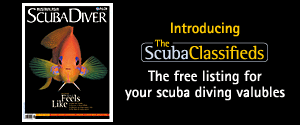- Home
- Directory
- Shop
- Underwater Cameras - Photographic Accessories
- Smartphone Housings
- Sea Scooters
- Hookah Dive Systems
- Underwater Metal Detectors
- Dive Gear
- Dive Accessories
- Diving DVD & Blu-Ray Discs
- Diving Books
- Underwater Drones
- Drones
- Subscriptions - Magazines
- Protective Cases
- Corrective Lenses
- Dive Wear
- Underwater Membership
- Assistive Technology - NDIS
- On Sale
- Underwater Gift Cards
- Underwater Art
- Power Stations
- Underwater Bargain Bin
- Brands
- 10bar
- AOI
- AquaTech
- AxisGo
- Backscatter Underwater Video and Photo
- BLU3
- Cayago
- Chasing
- Cinebags
- Digipower
- DJI
- Dyron
- Edge Smart Drive
- Eneloop
- Energizer
- Exotech Innovations
- Fantasea
- Fotocore
- Garmin
- Geneinno
- GoPro
- Hagul
- Hydro Sapiens
- Hydrotac
- Ikelite
- Indigo Industries
- Inon
- Insta360
- Intova
- Isotta Housings
- Jobe
- JOBY
- Kraken Sports
- LEFEET
- Mirage Dive
- Nautica Seascooters
- Nautilus Lifeline
- NautiSmart
- Nitecore
- Nokta Makro
- Oceanic
- Olympus
- OM System
- Orca Torch
- Paralenz
- PowerDive
- QYSEA
- Scubajet
- Scubalamp
- Sea & Sea
- SeaDoo Seascooter
- SeaLife
- Seavu
- Shark Shield
- Sherwood Scuba
- Spare Air
- StickTite
- Sublue
- Suunto
- SwellPro
- T-HOUSING
- Tusa
- U.N Photographics
- Venture Heat
- XTAR
- Yamaha Seascooter
- Youcan Robot
Byron Bay - Where Tropical and Temperate Waters Merge
Contributed by Wandy Hochgrebe
 The
township of Byron Bay lies on the east coast of the Australian continent, a
mere two hours south of Brisbane and about nine hours north of Sydney. Byron
Bay is quite well known for being the most easterly point of the Australian
mainland and is home to the most powerful lighthouse in the southern hemisphere.
The
township of Byron Bay lies on the east coast of the Australian continent, a
mere two hours south of Brisbane and about nine hours north of Sydney. Byron
Bay is quite well known for being the most easterly point of the Australian
mainland and is home to the most powerful lighthouse in the southern hemisphere.
Known for the alternative lifestyle and friendly people, Byron Bay has grown into one of Australia's most popular holiday destinations for people wanting something more than beach alone.
The many cafes and the relaxed atmosphere put you in a holiday mood right away.
For those seeking culture, nightlife and fine dining, Byron also has a lot to
offer. Art exhibitions, gallery openings, fire dancing performances and plenty
of live music are always on offer.
People do not only visit Byron Bay for its culture it also has some major natural
attractions. One of them is the annual whale migration of the majestic Humpback
Whale.Between May and October 5000 individuals make their way up North and back
down to the Antarctica each year. Both land based whale watching and the close-up
experience from boats has increased in popularity over the last few years.
Although Byron Bay is one of Australia's most popular holiday destinations, only few people realise the fantastic marine environment Byron Bay has to offer. This popular subtropical township renown for its beautiful beaches and stunning hinterland is part of the Cape Byron Marine Park and home to the Julian Rocks Marine Sanctuary.
Julian Rocks
 Julian
Rocks consists of ancient igneous rock, remains of a volcanic eruption more
than 20 million years ago. It is an extension of Cape Byron separated by water
and forms a most unique habitat, providing shelter and food for more than 500
tropical and temperate fish species alone. Boulders, sand gutters and trenches
form a fantastic underwater landscape, coloured by sessile life such as sponges,
hard and soft corals and tunicates.
Julian
Rocks consists of ancient igneous rock, remains of a volcanic eruption more
than 20 million years ago. It is an extension of Cape Byron separated by water
and forms a most unique habitat, providing shelter and food for more than 500
tropical and temperate fish species alone. Boulders, sand gutters and trenches
form a fantastic underwater landscape, coloured by sessile life such as sponges,
hard and soft corals and tunicates.
Since 1982, marine life has been protected to a certain extent through the creation of Julian Rocks Marine Reserve. This helped the emergence of a unique underwater Mecca for marine life at this rock formation only 2.5km off shore.
In December 2002 Julian Rocks became part of the Cape Byron Marine Park and in May 2006, the Marine Park zoning plan came into action, which amongst other things means that an area with a radius of 1500m around Julian Rocks has become a Sanctuary Zone for most of the year. This will hopefully see fish stocks increase even more and give the critically endangered Grey Nurse Sharks some well deserved additional protection.
 Even
though Julian Rocks looks rather small, dive sites are plenty and its rocky
reefs extend to Spot X, Mackeral Boulder and the Cape Pinnacles. Diving is pleasant
all year round with temperatures ranging from 18˚ C in winter to 27˚ C in summer.
Due to its sheltered location diving takes place almost every day of the year,
with visibility ranging from 5 to 30 meters.
Even
though Julian Rocks looks rather small, dive sites are plenty and its rocky
reefs extend to Spot X, Mackeral Boulder and the Cape Pinnacles. Diving is pleasant
all year round with temperatures ranging from 18˚ C in winter to 27˚ C in summer.
Due to its sheltered location diving takes place almost every day of the year,
with visibility ranging from 5 to 30 meters.
The marine environment around Byron Bay is quite unique as both tropical and temperate currents that flow past Julian Rocks contribute equally to the abundance and variety of marine life. With water temperatures and currents changing throughout the year there are many seasonal visitors. Every dive at Julian Rocks is different unlike diving on many coral reefs and many people return to this dive site on a very regular basis to experience it during different seasons and conditions.
Winter - Grey Nurse Sharks
The month of May, when water temperatures start to drop, marks the start of
the Grey Nurse Shark season. These endangered and in NSW fully protected sharks
are fantastic to encounter. Although these sharks look ferocious they are perfectly
safe to dive with.
The Grey Nurse Sharks (Carcharius taurus) prefer the deeper waters and they
often congregate in the sandy gutters on the North side of Julian Rocks at a
depth of around twenty meters.
Through the 1950s and 60s these sharks were hunted to near extinction in Australian waters as they were wrongly believed to be man-eaters. With their total population estimated to be less than 500 the Grey Nurse Shark population on the East Coast of Australia is now considered Critically Endangered. Fortunately, Julian Rocks has been identified as one of thirteen Critical Habitats for Grey Nurse Sharks along the NSW coast. Some fishing and even dive behavioural guidelines were put in place in the hope this will increase the chance of survival of this species.
Spring
 In
spring when the water temperature starts rising, a variety of tropical species
become more common around the rock and different kinds of butterfly fish, angelfish
and surgeonfish dart around the coral outcrops that can be found in different
places.
In
spring when the water temperature starts rising, a variety of tropical species
become more common around the rock and different kinds of butterfly fish, angelfish
and surgeonfish dart around the coral outcrops that can be found in different
places.
The juvenile Half-circled Angelfish (Pomacanthus semicirculatus) can
be easily identified due to its bright blue colouring and white semi-circles
on the side. Once it becomes an adult the rings disappear, but they are still
stunning. Of the Surgeonfish the Blue Tang (Paracanthurus hepatus)
must be the most noticeable one  and
juveniles can be found hovering just above table corals together with Headband
Humbugs (Dascyllus reticulatus), ducking inside for cover as soon as
anything approaches.
and
juveniles can be found hovering just above table corals together with Headband
Humbugs (Dascyllus reticulatus), ducking inside for cover as soon as
anything approaches.
The butterflyfish are less shy and are found mostly in pairs, nipping on coral polyps or grazing. The Threadfin, Vagabond and Dusky Butterflyfish (Chaetodon auriga, C. vagabundus and C. flavirostris) are some of the species common at Julian Rocks. By the way, don't cross into the territory of the Girdled Scalyfin (Parma unifasciata) as those little farmers are fierce in protecting their algae patches.
Of course everybody knows the anemonefish, which live in symbiosis with their anemone. At Julian Rocks a number of different species can be encountered, the most common ones being the Barrier Reef Anemonefish (Amphoprion akindynos) and the Blue-lip Anemonefish (Amphiprion latezonatus).
 Around
mid December the anemonefish start laying their bright orange eggs. Interestingly,
the eggs are cared for mainly by the male, which can be found fanning the egg
mass with their fins, providing its offspring with oxygen rich water. Hatching
generally occurs after a period of 6 to 10 days.
Around
mid December the anemonefish start laying their bright orange eggs. Interestingly,
the eggs are cared for mainly by the male, which can be found fanning the egg
mass with their fins, providing its offspring with oxygen rich water. Hatching
generally occurs after a period of 6 to 10 days.
It is at this time that the large stingrays arrive. Black Stingrays (Dasyatis thetidis), the Cowtail Stingray (Pastinachus sephen) and the Smooth Stingray (Dasyatis brevicaudata) can be seen on most dives. With their huge wingspan of almost 2 meters or more they are a quite impressive sight.
Summer
As the water temperature starts to reach its maximum in early January, Leopard
Sharks (Stegatosoma fasciatum) aggregate at Julian Rocks.
Very little is known about these prehistoric looking and mysterious sharks.
They mainly lie together in small groups on sandy patches and can be easily
recognised by their round forehead, pale skin with leopard-like spots and their
characteristic tail.
Leopard sharks are egg-laying sharks, but no egg cases have ever been found near Julian Rocks. Much of the biology of the leopard shark is still unknown including where the individuals found at Julian Rocks go in winter and whether the same animals return to the few known aggregation sites each year. As the water begins to cool in early May the Leopard Sharks simply disappear from Julian Rocks.
Manta Rays visit Julian Rocks on occasion, however the end of summer and early autumn seems to be their preferred time of the year.
Other Sharks and Rays
The most commonly observed shark around Julian Rocks is the wobbegong shark. Three different species have now been identified and they are present all year round.
 The
Dwarf Ornate Wobbegong only grows to one metre and is the smallest species.
It is observed regularly in the shallower waters, draped over a sponge or table
coral. The larger Ornate Wobbegongs are not as common in this area as the other
two species. It has only just recently been decided that this is a separate
species from the Dwarf Ornate Wobbegongs and they can grow up to 3 metres in
length.
The
Dwarf Ornate Wobbegong only grows to one metre and is the smallest species.
It is observed regularly in the shallower waters, draped over a sponge or table
coral. The larger Ornate Wobbegongs are not as common in this area as the other
two species. It has only just recently been decided that this is a separate
species from the Dwarf Ornate Wobbegongs and they can grow up to 3 metres in
length.
The similar looking Spotted Wobbegong can be distinguished from the Ornate Wobbegongs
by its colour patterns, which consist of broad dark saddles and the distinct
circles formed of groupings of small white dots.
Most of the time the wobbegongs lay at the bottom and feeding occurs mainly
at night. Their prey includes fish, crayfish, crabs and octopus.
Closely related to the sharks are the rays, most of which are regulars at Julian
Rocks.
Although the Blue Spotted Stingray (Dasyatis kuhlii) is believed to be a solitary species, these rays seem particularly active in summer and can be found in the shallows, piling on top of each other in the sand. Hundreds of Blue Spotted Stingrays can be observed in very tight groups in the same area, usually in early to mid January which could be interpreted as mating behaviour.
Another ray species seems to have found a meeting place at Julian Rocks as well. The Numbfish (Hypnos monopterygium), also called Electric Ray, becomes visible in higher numbers during the beginning of autumn in March. Normally they bury themselves in the sand and wait for their prey to swim past, but during this time they actively swim around in the shallows. This behaviour has been observed during the same weeks of the year for many years at Julian Rocks and has not been reported elsewhere.
These odd-looking rays have specialized muscles located on their back which
can generate a significant electric current (50 amps, with peak of pulses sometimes
exceeding 1 kilowatt). Not only does the Numbfish use this to stun their prey;
it can also seriously deter any predators.
Julian Rocks' reefs are also home to the White-spotted Eagle Rays (Aetobatus
narinari), the Sparsely Spotted Stingaree (Urolophus paucimaculatus),
the Eastern Fiddler Ray (Trygonorrhina fasciata), the Eastern Shovelnose
Ray (Apytychotrema rostrata), the Giant Guitarfish (Rhynchobatus
djiddensis) and very occasionally the Southern Eagle Ray (Myliobatis
australis). And if you are very lucky you can witness spectacular schools
of up to 200 Cow-nose Rays (Rhinoptera neglecta) that sometimes pass
by Julian Rocks.
Marine Turtles
 One
of the big attractions when visiting Julian Rocks must be the friendly sea turtles
that live here. Julian Rocks is home to three different species: the Green Turtle
(Chelonia mydas), the loggerhead turtle (Caretta caretta)
and the Hawksbill Turtle (Eretmochelys imbricata).
One
of the big attractions when visiting Julian Rocks must be the friendly sea turtles
that live here. Julian Rocks is home to three different species: the Green Turtle
(Chelonia mydas), the loggerhead turtle (Caretta caretta)
and the Hawksbill Turtle (Eretmochelys imbricata).
All three marine turtle species are currently experiencing serious threats to
their survival.
Not many people know that adult Green Turtles are unique among sea turtles in that they have a completely vegetarian diet and feed on seagrasses and algae, whereas Hawksbill Turtles feed mainly on invertebrates like sea squirts and anemones.
 Most
divers know that Loggerhead Turtles can reach enormous sizes. One very large
Loggerhead seems to call Julian Rocks its home. Its size indicates that it must
have been around for a long time! The lifespan of a Loggerhead turtle is estimated
to be 50 years or more and adults grow to an average weight of about 100 kilos.
Equipped with powerful jaws they can crush crabs and molluscs and even the spines
of a sea urchin are no defence.
Most
divers know that Loggerhead Turtles can reach enormous sizes. One very large
Loggerhead seems to call Julian Rocks its home. Its size indicates that it must
have been around for a long time! The lifespan of a Loggerhead turtle is estimated
to be 50 years or more and adults grow to an average weight of about 100 kilos.
Equipped with powerful jaws they can crush crabs and molluscs and even the spines
of a sea urchin are no defence.
Even though turtles are very much at home underwater they are in fact reptiles and need to go the surface to breathe. During resting periods they can stay submerge for long periods of time. If they become more active they will need to return to the surface more often - which is why turtles are very commonly seen by snorkellers. Julian Rocks therefore not only attracts divers, many people that have never ever snorkelled in their life come out here to swim and snorkel with turtles ... and some of them will turn into divers eventually.
Cephalopods
The rocky reef provides an ideal habitat for many Cephalopods - literally meaning head-footers -, which include octopus, cuttlefish and squid.
Several species of octopus have been sighted on the reefs around Julian Rocks. Generally shy creatures these invertebrates prefer to crawl into their burrow when they feel threatened, holding shell fragments and rubble in front of them.
The cuttlefish around Julian Rocks can be found hovering just above the ocean
floor, and usually move around in pairs.
When cuttlefish feel threatened they initially might try to blend in with their
surroundings and almost disappear from sight. They are true masters of camouflage.
If approached too close for comfort they will try to make themselves look as
large as possible by extending their arms and rapidly flashing colours are displayed
often as a warning.
Another member of the cephalopods, the squid, is seen around Julian Rocks only occasionally. Like the other cephalopods they use a specialised foot called a siphon, which enables them to hunt and escape quickly by expelling water under pressure.
Pelagics and Predators
Marine life does not only come to find shelter at Julian Rocks, food is abundant
here attracting schools of streamlined predators. Pelagic hunters such as Mulloway
(Argyrosomus japonicus) and Yellowtail Kingfish (Seriola lalandi)
are fast swimmers that can be found regularly in the deeper waters around Julian
Rocks. Other pelagics include Big-eye Trevally or Jacks, as well as Golden and
Blue-fin Trevally.
Occasionally barracudas pay a visit to the rocky reefs and can be seen in small
schools out in the blue.
 Hunting
closer to the reef are the spectacular lionfish. Several species are observed
in this area including the Common Lionfish (Pterois volitans), the
Dwarf Lionfish (Dendrochirus brachypterus) and the Spotfin Lionfish
(Pterois antennata). It is common diver knowledge that Lionfish have
extremely venomous dorsal fin spines, but they are generally not dangerous to
approach. Lionfish prey on a wide variety of smaller fishes, shrimps and crabs.
They have few predators in their native range. Their prey, which is hunted mainly
at night is obtained with a lightning quick snap of the jaws and swallowed whole.
Hunting
closer to the reef are the spectacular lionfish. Several species are observed
in this area including the Common Lionfish (Pterois volitans), the
Dwarf Lionfish (Dendrochirus brachypterus) and the Spotfin Lionfish
(Pterois antennata). It is common diver knowledge that Lionfish have
extremely venomous dorsal fin spines, but they are generally not dangerous to
approach. Lionfish prey on a wide variety of smaller fishes, shrimps and crabs.
They have few predators in their native range. Their prey, which is hunted mainly
at night is obtained with a lightning quick snap of the jaws and swallowed whole.
Several species of moray can be found at Julian Rocks, including the Abbot's Moray (Gymnothorax eurostus), the White-eyed Moray (Siderea thyrsoidea), the Green Moray (Gymnothorax prasinus), the Mosaic Moray (Enchelycore ramose) and the Sieve-pattern Moray (Gymnothorax cribroris).
Moray eels can look quite fearsome, as their mouths are equipped with razor sharp teeth. The wide open jaws are generally not a sign of aggression, the gape is necessary for respiration as water has to be actively pumped across the gills. During the day most morays are found in crevices and holes affording protection from predators and allowing them to strike at prey from a hidden position.
 Besides
the animals mentioned already there is plenty more to see such as the playful
Blue Gropers, bullseyes, fusiliers, Old Wives, Harlequin Ghost Pipefish, Pineapplefish
hiding under ledges, Sergeant Majors, Barred Soapfish, cowry shells, a variety
of brightly coloured nudibranchs, and plenty of other molluscs, crayfish and
an array of smaller crustaceans. Sometimes there are so many fish you can hardly
see where you are going.
Besides
the animals mentioned already there is plenty more to see such as the playful
Blue Gropers, bullseyes, fusiliers, Old Wives, Harlequin Ghost Pipefish, Pineapplefish
hiding under ledges, Sergeant Majors, Barred Soapfish, cowry shells, a variety
of brightly coloured nudibranchs, and plenty of other molluscs, crayfish and
an array of smaller crustaceans. Sometimes there are so many fish you can hardly
see where you are going.
Byron Bay and Julian Rocks offer a unique environment that celebrates and nurtures diversity, abundance and colour and is considered one of Australia's top 10 dive sites - and of course our number ONE.
In addition to the amazing wildlife that can be encountered at Julian Rocks, this diving site also has the advantage that it is only a short boat ride from the shore. You can do up to four dives a day, but it is also possible to do just one or two; leaving plenty of time to relax and enjoy Byron Bay or explore the surrounding national parks and villages.
Diving is done on a small scale and there are only two dive shops in town, which ensures that the dive sites are never crowded.
Getting there
Obviously you can just drive to Byron Bay: ~200 km south of Brisbane and 850 km north of Sydney. Byron Bay has also two airports nearby: one at Ballina (20 minutes south) and one at Coolangatta - Gold Coast (40 minutes north). There are regular flights from all Australian capitals and some international flights into Coolangatta. Brisbane Aiport has flights from and to destinations around the world.
Photos and video clips by Tim Hochgrebe from Planula Underwater Productions. More videoclips from Tim Hochgrebe can be found at You Tube.
Shopfront
-
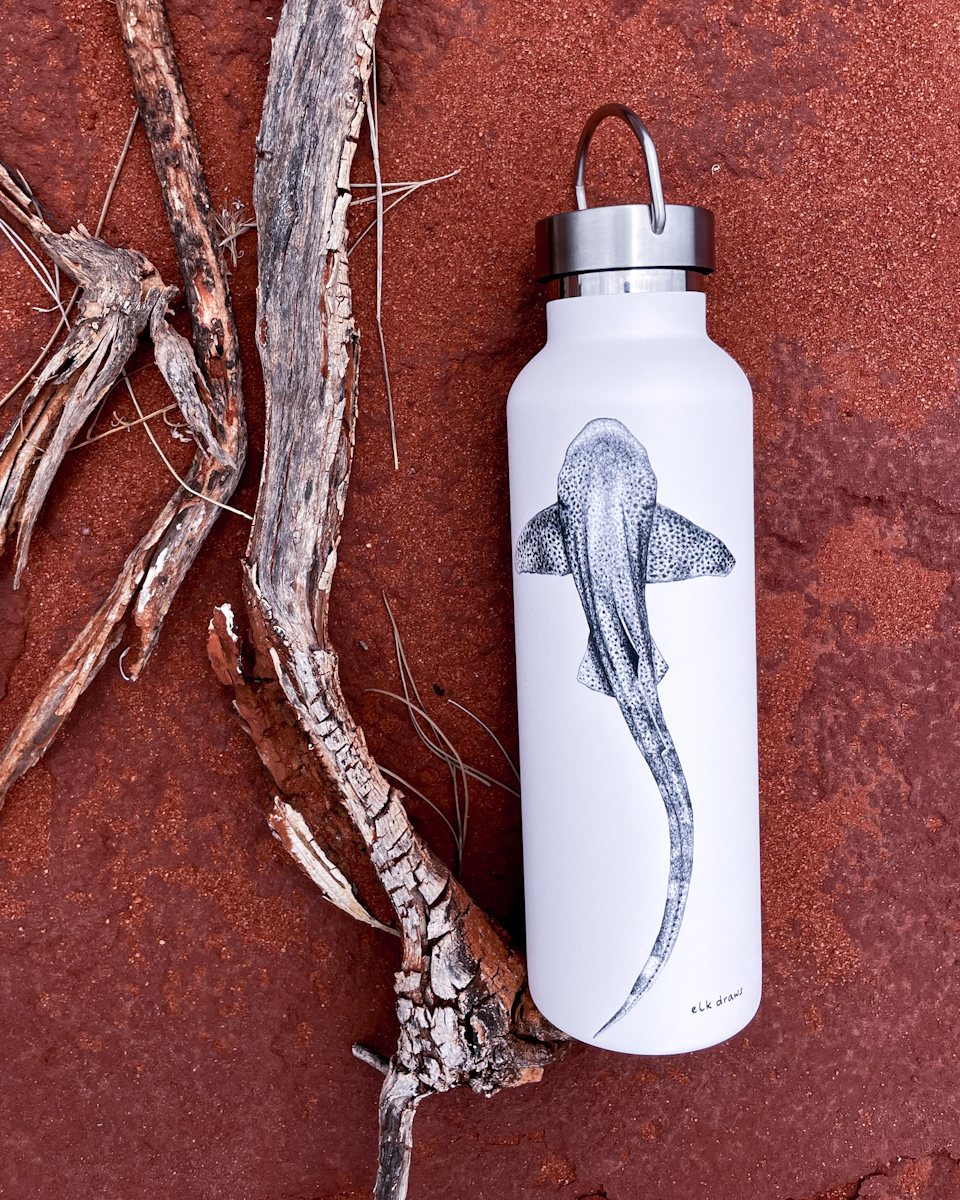 Underwater X Elk Draws Stainless Steel Insulated Water Bottle for Mental Health - Leopard Shark
Underwater X Elk Draws Stainless Steel Insulated Water Bottle for Mental Health - Leopard Shark
- Price A$ 39.95
-
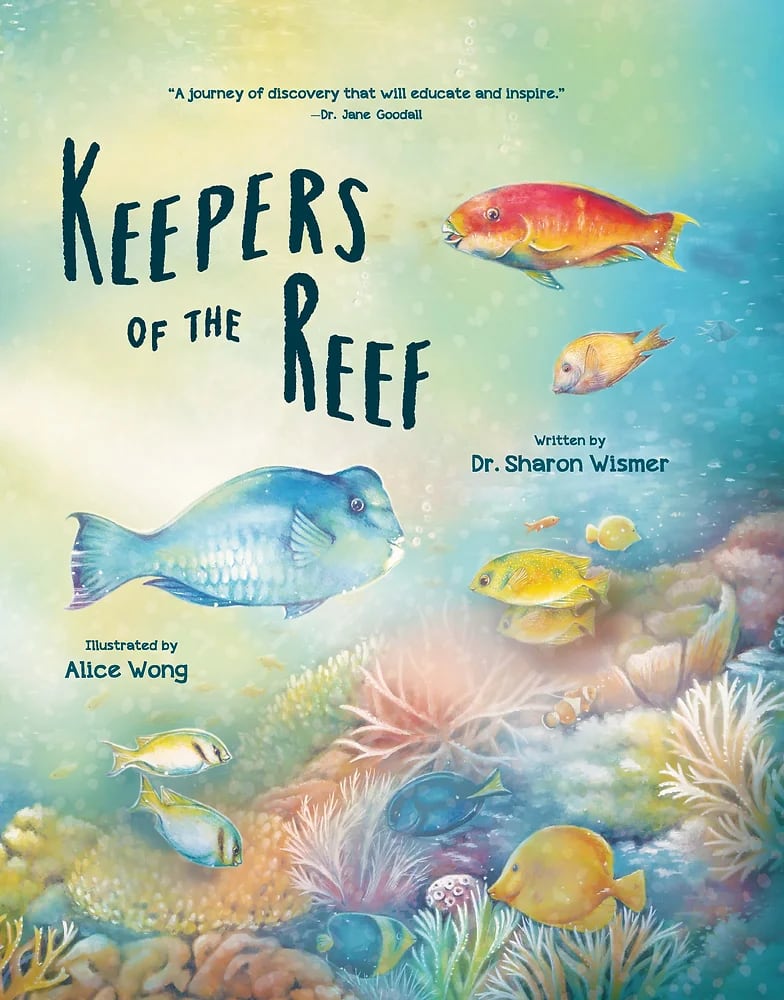 Keepers of the Reef
Keepers of the Reef
- Price A$ 31.95
-
 CineBags - CB71 Jumbo Dome Port Case
CineBags - CB71 Jumbo Dome Port Case
- Price A$ 143.95
-
 Insta360 X4 Invisible Dive Case
Insta360 X4 Invisible Dive Case
- Price A$ 169.00
-
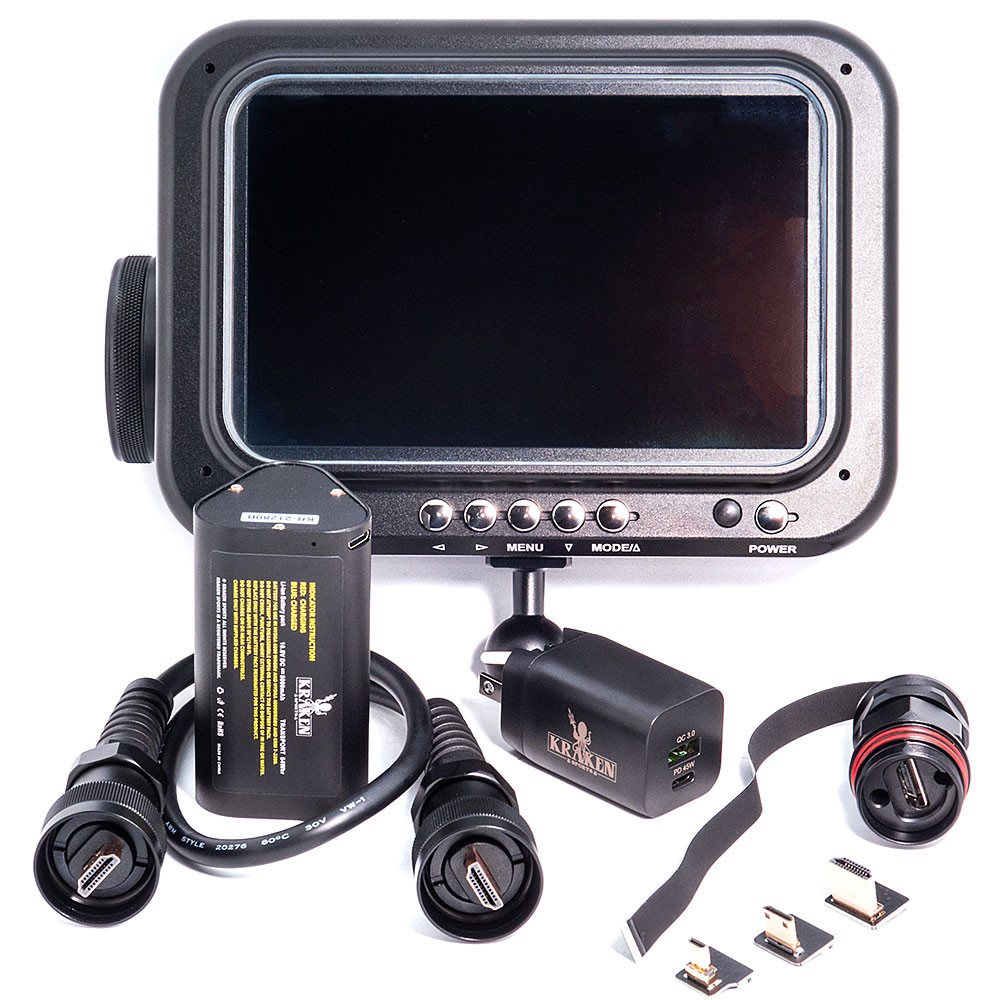 Kraken 7-inch Ultra Bright Underwater Monitor KRM07-2200
Kraken 7-inch Ultra Bright Underwater Monitor KRM07-2200
- Price A$ 2,999.00
-
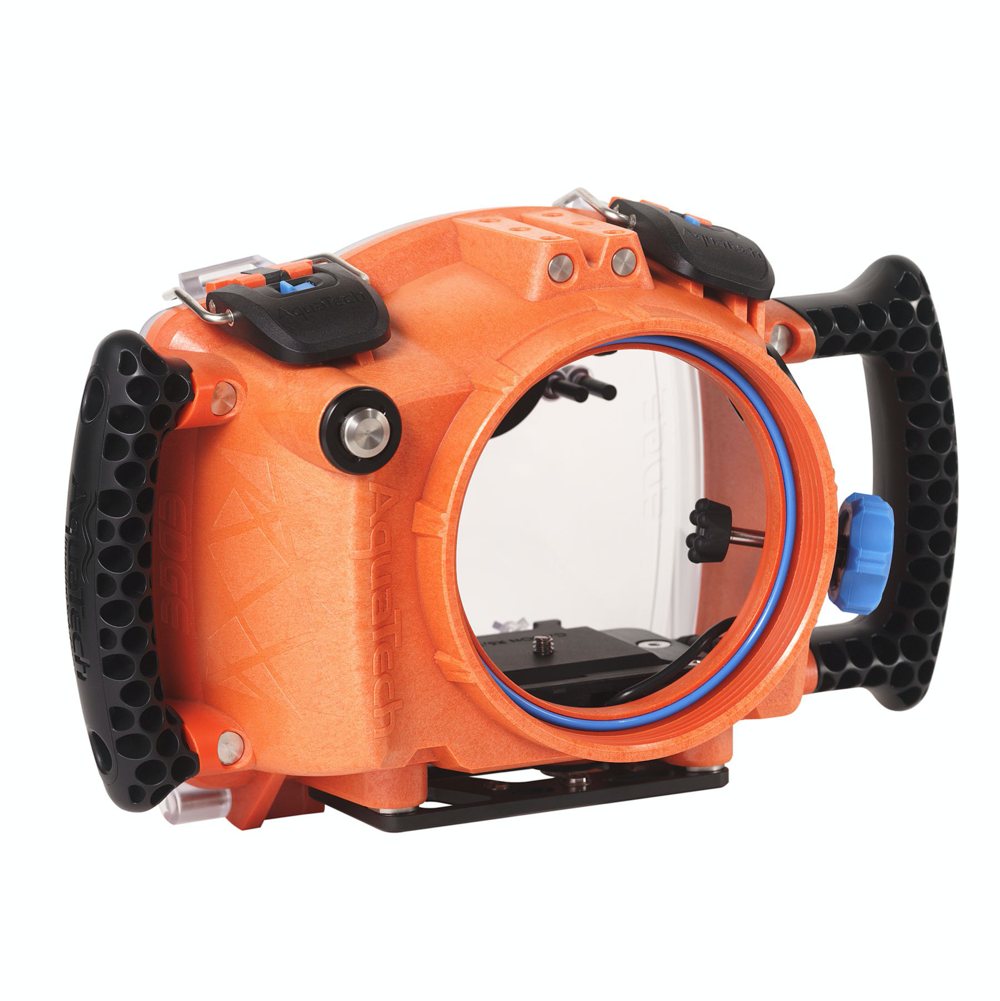 AquaTech EDGE Pro Camera Water Housings - Nikon mirrorless
AquaTech EDGE Pro Camera Water Housings - Nikon mirrorless
- Price A$ 2,149.00
In the Directory

 Sea-Doo Seascooter Australia
Sea-Doo Seascooter Australia
Exclusive official distributor and dealer for SEA-DOO Seascooters in Australia and New Zealand. The revolutionary SeaDoo Seascooter series feature the lightest and most efficient personal water propellers in the world at a price that won't break the bank.
 AquaTech Australia
AquaTech Australia
Since 1998 AquaTech has been at the forefront of the design and manufacture of professional photographic accessories.


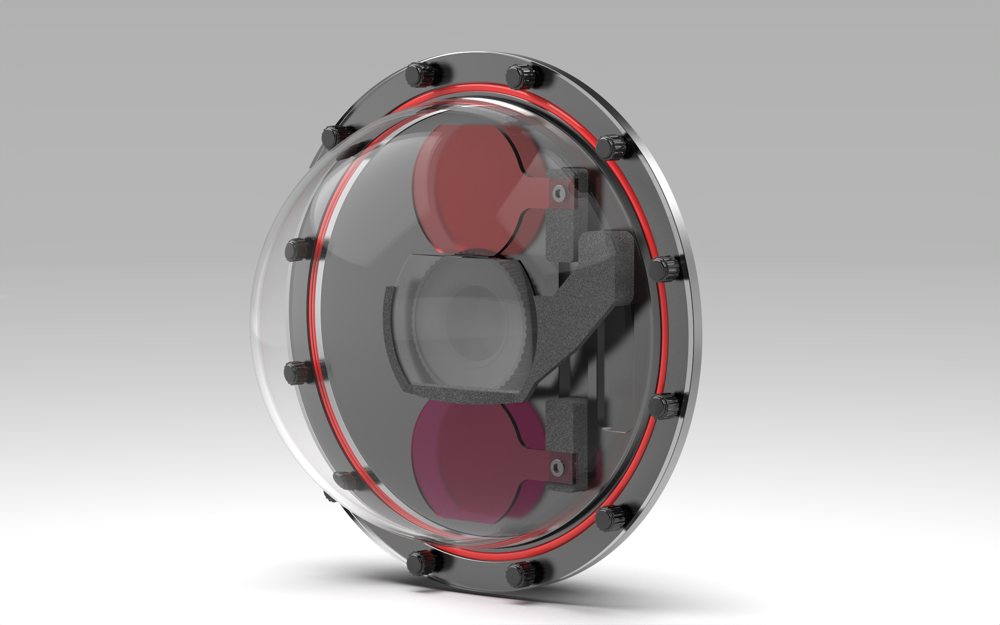
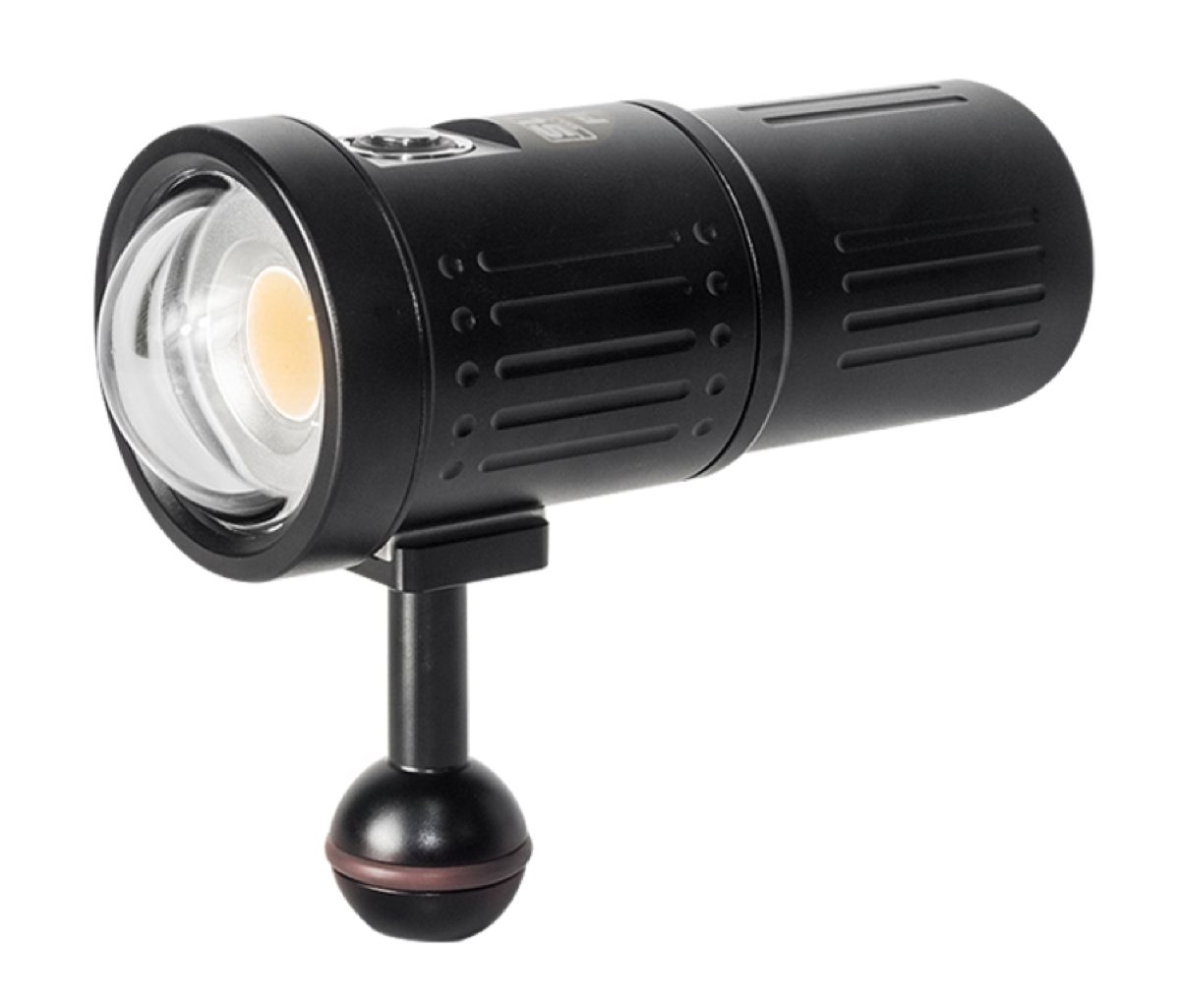
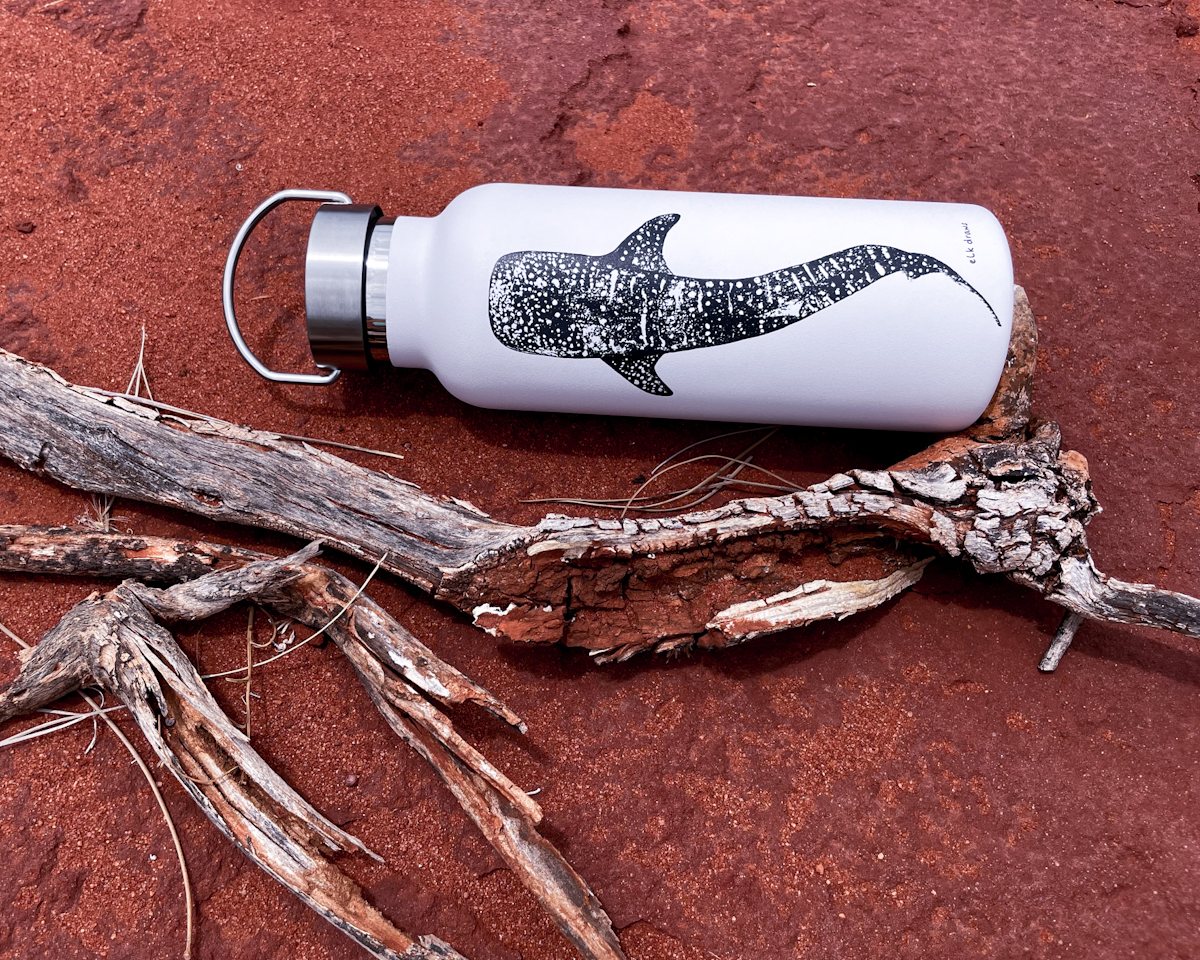
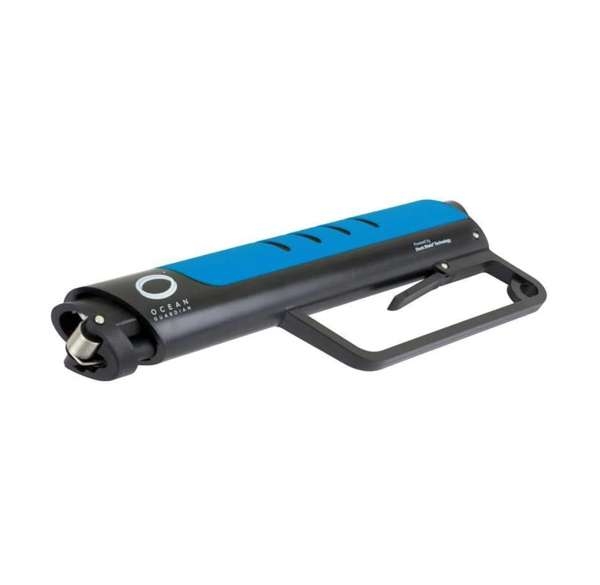



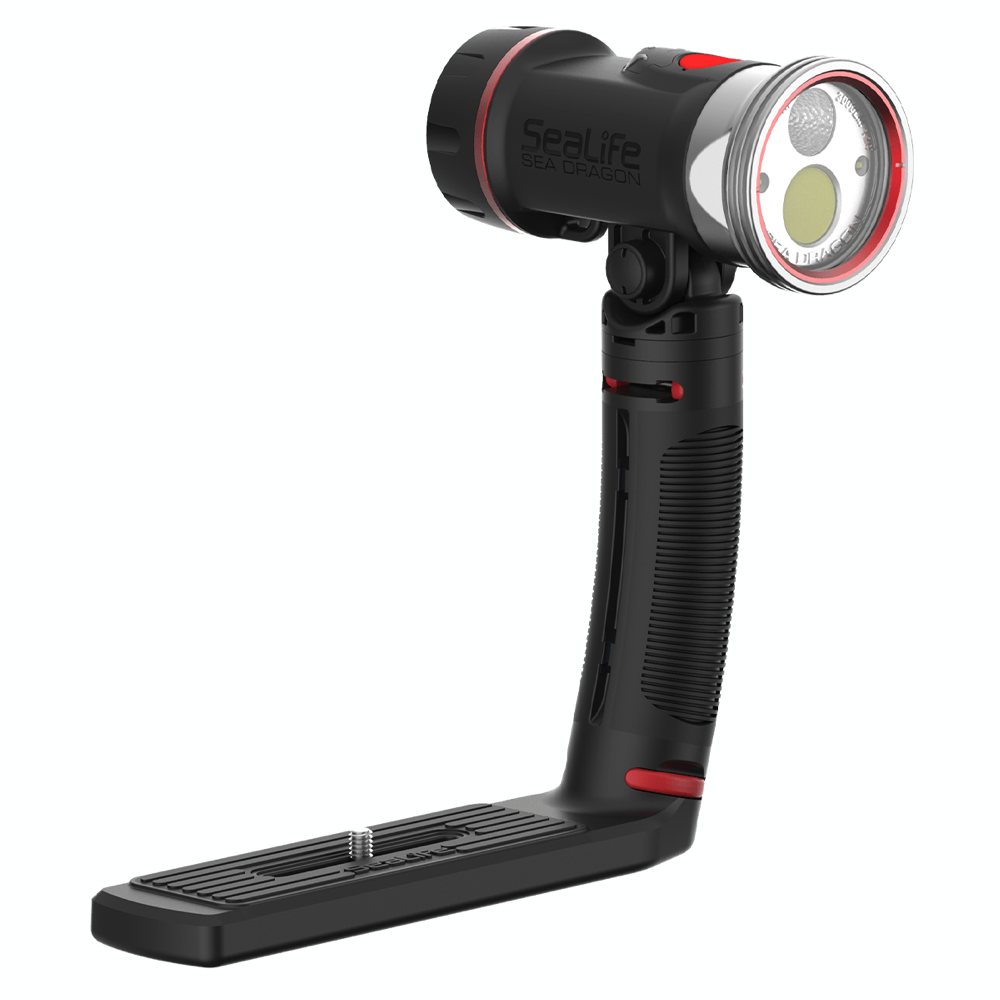



 LI-92B battery for OM System TG-7 Waterproof Tough Camera - Olympus
LI-92B battery for OM System TG-7 Waterproof Tough Camera - Olympus  SeaLife Sea Dragon 3000F with Color Boost™ Auto Photo/Video Light
SeaLife Sea Dragon 3000F with Color Boost™ Auto Photo/Video Light 


